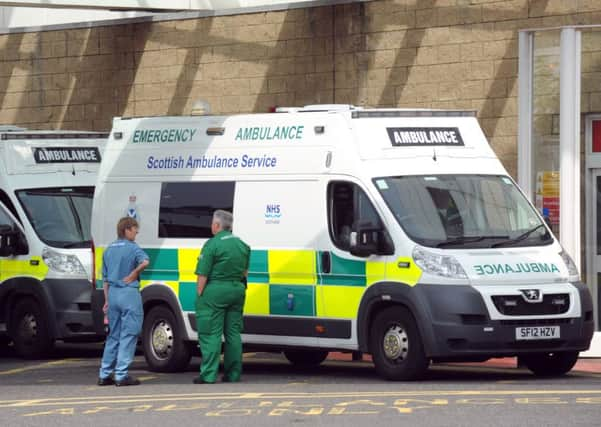Calls made to re-classify ambulance response times


Senior Scots paramedic Anthony Haley described the current system as “not fit for purpose” as constant tweaking of targets was allowing over-stretched services to simply appear as though they are performing well.
Emergency calls in Scotland are divided into Category A, B and C, helping the service ascertain the severity of the problem.
Advertisement
Hide AdAdvertisement
Hide AdCategory A refers to life-threatening incidents, which have an eight-minute target response time, while Category B refers to serious incidents where the response target is 19 minutes.
The least serious group – Category C – refers to non-serious incidents in which either an ambulance will attend within one hour or the caller will be referred to another agency.
Mr Haley, a team leader for the Scottish Ambulance Service in South Lanarkshire, wrote in Ambulance UK magazine: “I call on the government to be bold, intuitive and honest in accepting that applying time targets in a crude way like this – to tools which were unquestionably not designed to produce time stratifications for patient care – was a mistake.”
Stroke patients were among those who could wait longer for treatment, he added, although a suspected stroke is currently classified as a Category A incident. Mr Haley said: “Very robust evidence over recent years has shown that it doesn’t really matter if an ambulance gets to a stroke patient in five minutes or 25 minutes.
“What is crucial is that someone gets there quickly and takes the patient to a skilled centre within an hour of the onset of symptoms. That’s it.”
He added: “Tweaking what we have is not the answer; a wholesale change is. The ‘one glove fits all’ approach must stop.
“What is needed is an individualised approach to every incident given the unique circumstances involved.”
His ideas were welcomed by Scottish Lib Dem health spokesperson Jim Hume, who called for consideration of the way ambulance services measure response times.
Advertisement
Hide AdAdvertisement
Hide AdHe said: “Any targets in the NHS should always be driven by evidence if we are to maximise resource and deliver the best service for patients. Unfortunately, Scottish Government ministers too often ignore the experts in favour of newspaper headlines. This a thoughtful contribution to the debate which I hope ministers will reflect upon carefully.”
But the Scottish Ambulance Service (SAS) defended the current system. An SAS spokesman said: “While the response time is an important aspect of patient care, effective clinical triage and clinical expertise of ambulance teams is key to maintaining good patient outcomes.
“This is reflected in the introduction in recent years of clinical performance measures such as cardiac, resuscitation and stroke treatment.
“The current system, supported by clinicians in the Ambulance Control Centre, establishes the priority of the response based upon the clinical needs of the patient. Specially trained call takers will elicit as much information as possible so that calls are effectively triaged and the most appropriate ambulance response takes place.”